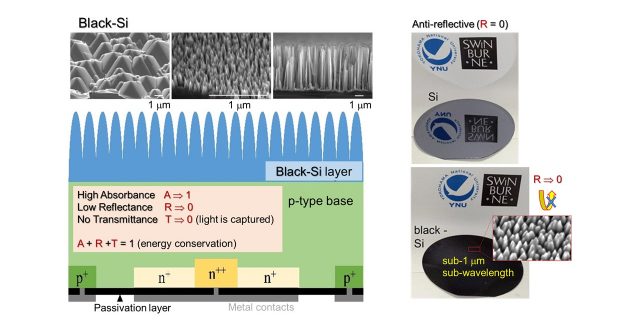In this article, the fabrication methods of black silicon (b-Si), application and performance of b-Si in photovoltaics, and the theoretical modelling efforts in b-Si based photovoltaic cells are reviewed. To date, the most popular fabrication methods are reactive ion etching and metal-assisted chemical etching, due to their flexibility and low cost. Other methods include laser irradiation, stain etching, electrochemical etching, and Fray-Farthing-Chen Cambridge process. Black silicon’s largest application is in photovoltaics due to its absorption properties. Currently the highest efficiency of b-Si based solar cell reported in the literature is 22.1% with an interdigitated back contact configuration. Currently, the issue of high recombination rates due to the nanostructures is being actively researched on, but has yet been fully resolved. There are only a few theoretical models of b-Si photovoltaics, with most focus on the optical properties. The optical performance is usually assessed based on Maxwell’s equations, while the electrical properties are simulated based on semiconductor equations, including Poisson’s, continuity, and drift-diffusion current equations. Most studies neglect the effect of temperature. Modelling of the thermal properties of silicon nanostructures is performed with the Monte Carlo method to solve the Phonon Radiative Transport Equation for the temperature distribution.

Review of a Black-Si light trapping in high efficiency (22%) solar cells
WRHI Newsおすすめ
Available online
(School of Materials and Chemical Technology / Dr. Saulius Juodkazis)
“Black-silicon assisted photovoltaic cells for better conversion efficiencies: A review on recent research and development efforts”
Materials Today Energy(DOI:10.1016/j.mtener.2020.100539)
For details, click here
<Abstract>
